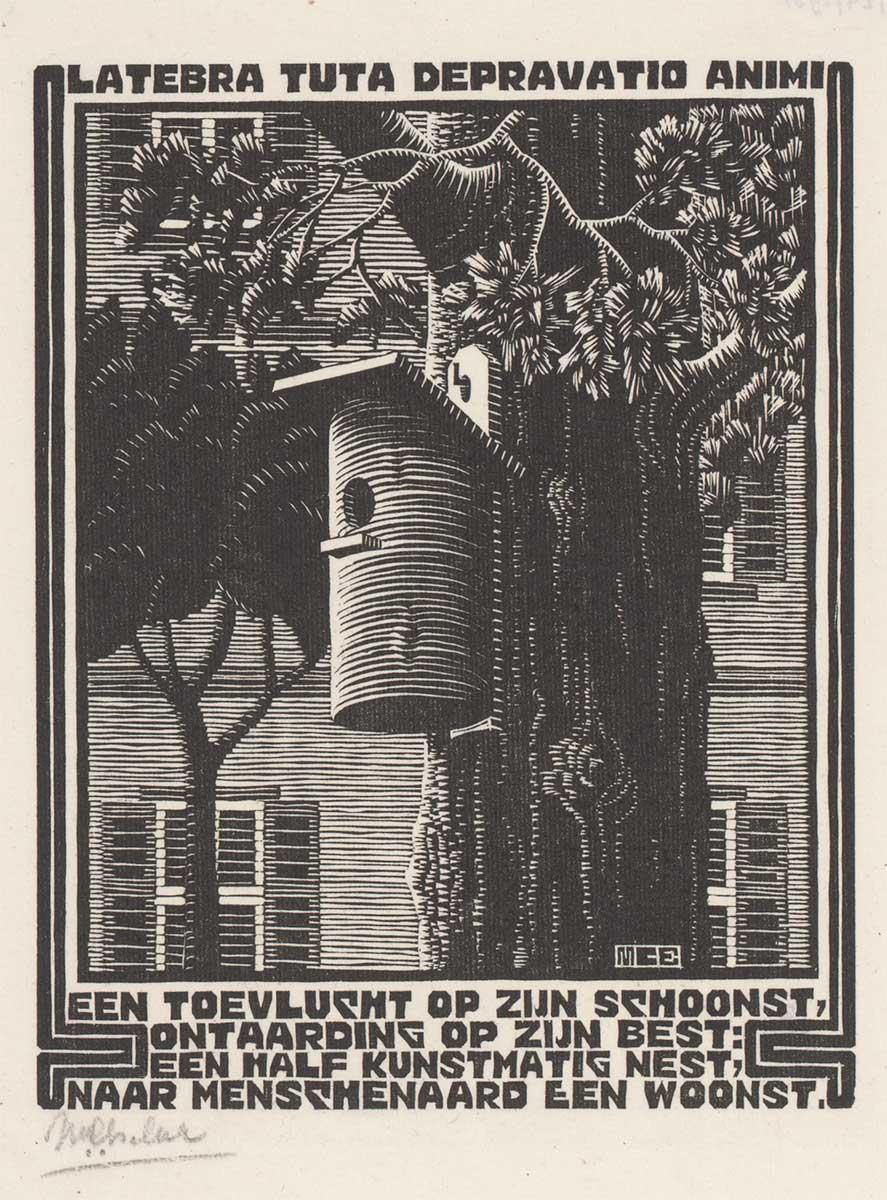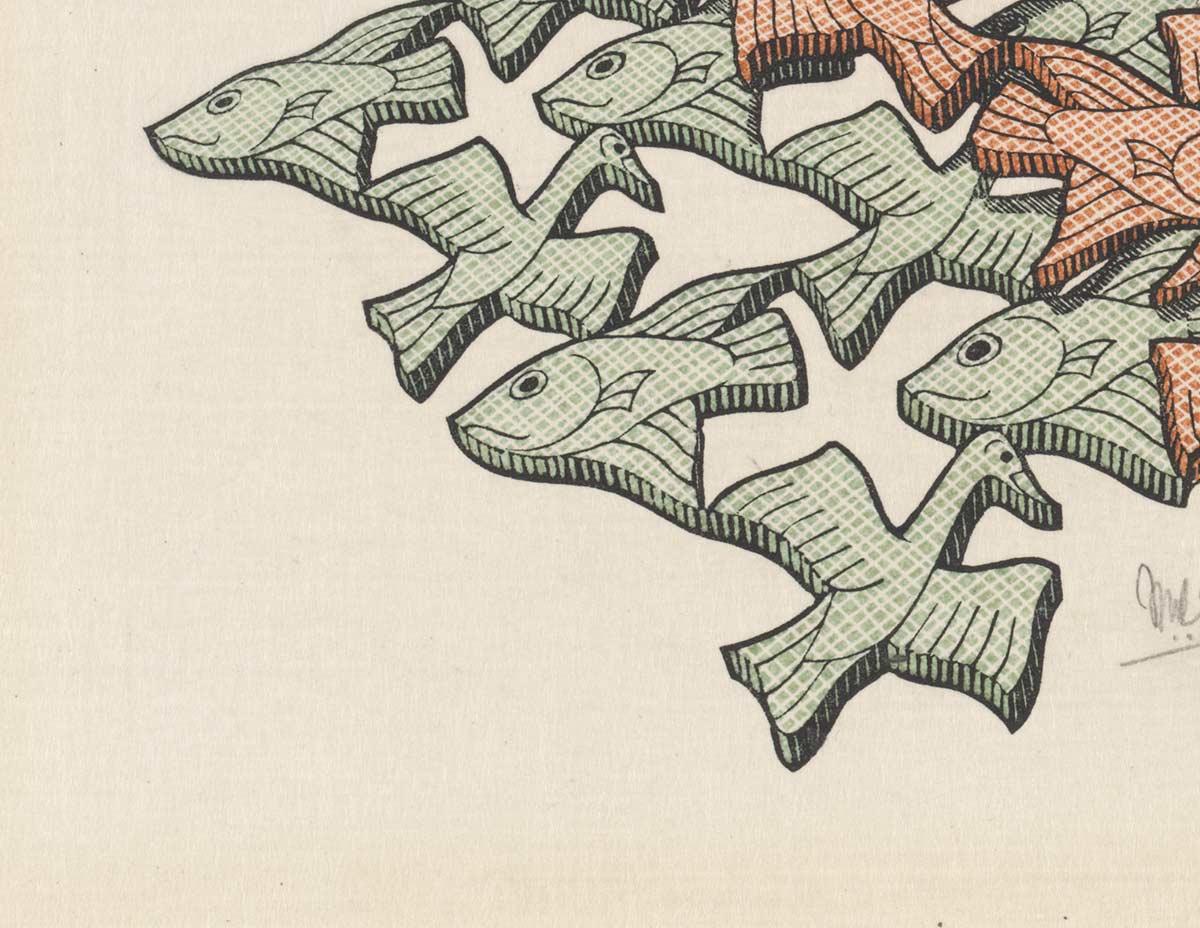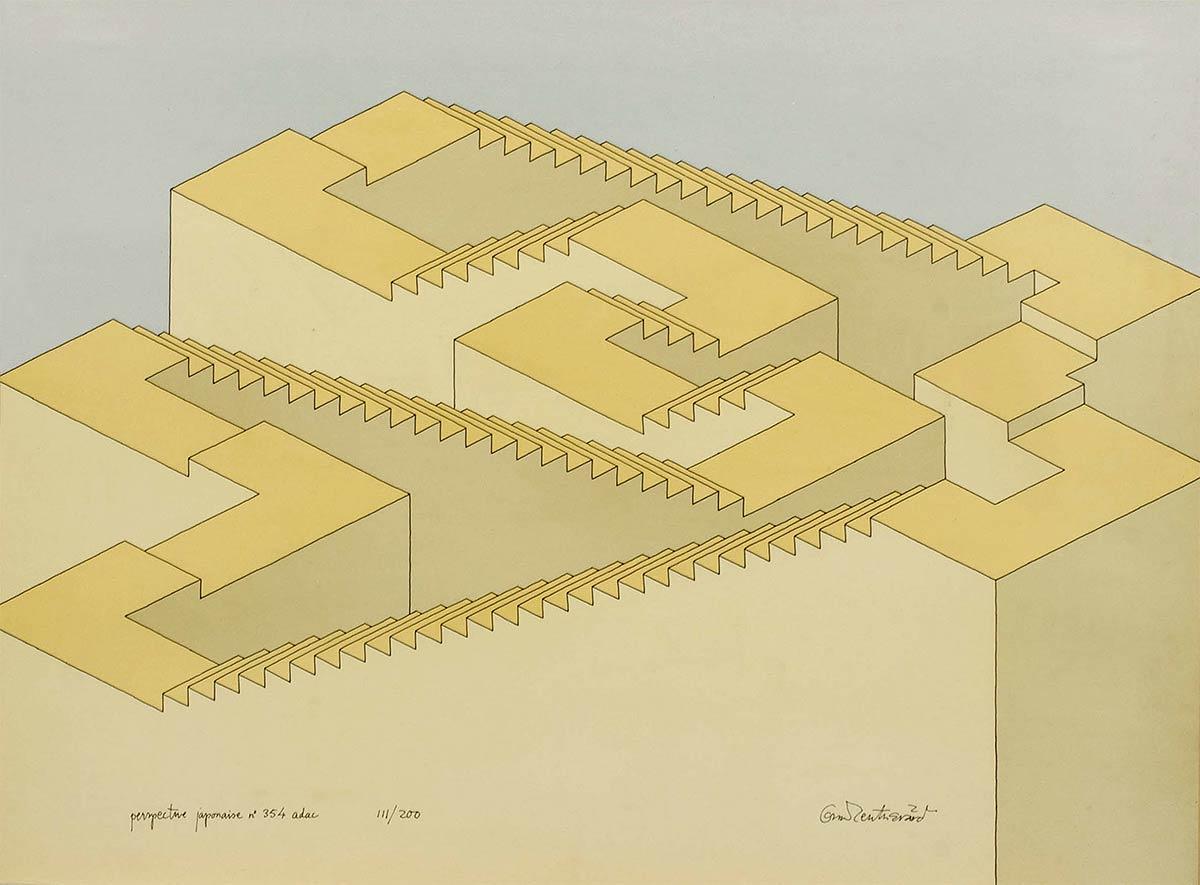

Samuel Jessurun de Mesquita (1868-1944) was a gifted artist, painter and printmaker with an idiosyncratic signature who occupies a special place in the canon of art. But above all he is the discoverer of M.C. Escher, the man who made the architecture student choose the profession that would make him world-famous. The sorcerer's apprentice was to outshine his discoverer and things slowly grew quieter around De Mesquita. On 31 January 1944 he was arrested by the Nazis. He died shortly afterwards in Auschwitz concentration camp. Escher was devastated and the death of his teacher profoundly impacted him. Nowadays the name of Samuel Jessurun de Mesquita is often directly linked to Escher's, but there is still plenty to be said about the teacher.
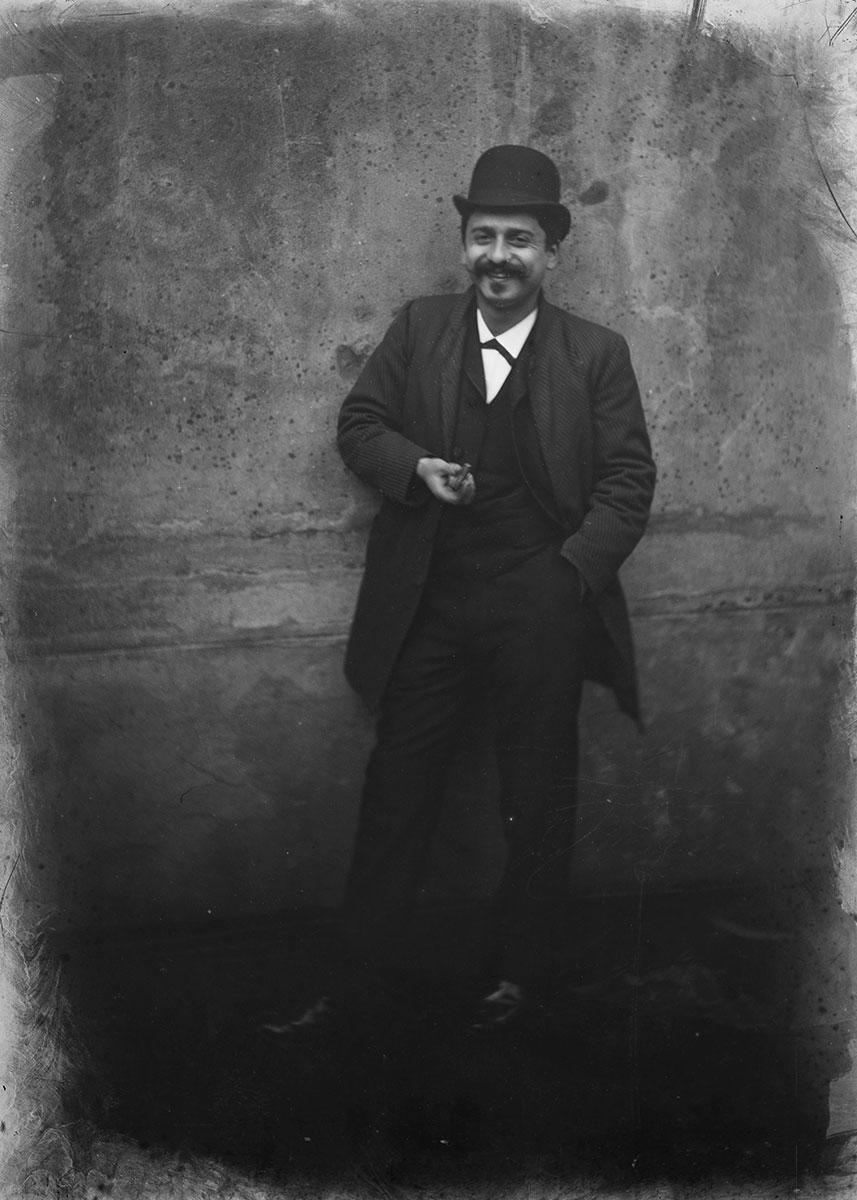
Samuel Jessurun de Mesquita by his brother Joseph, ca. 1888-1890. Collection Amsterdam City Archives

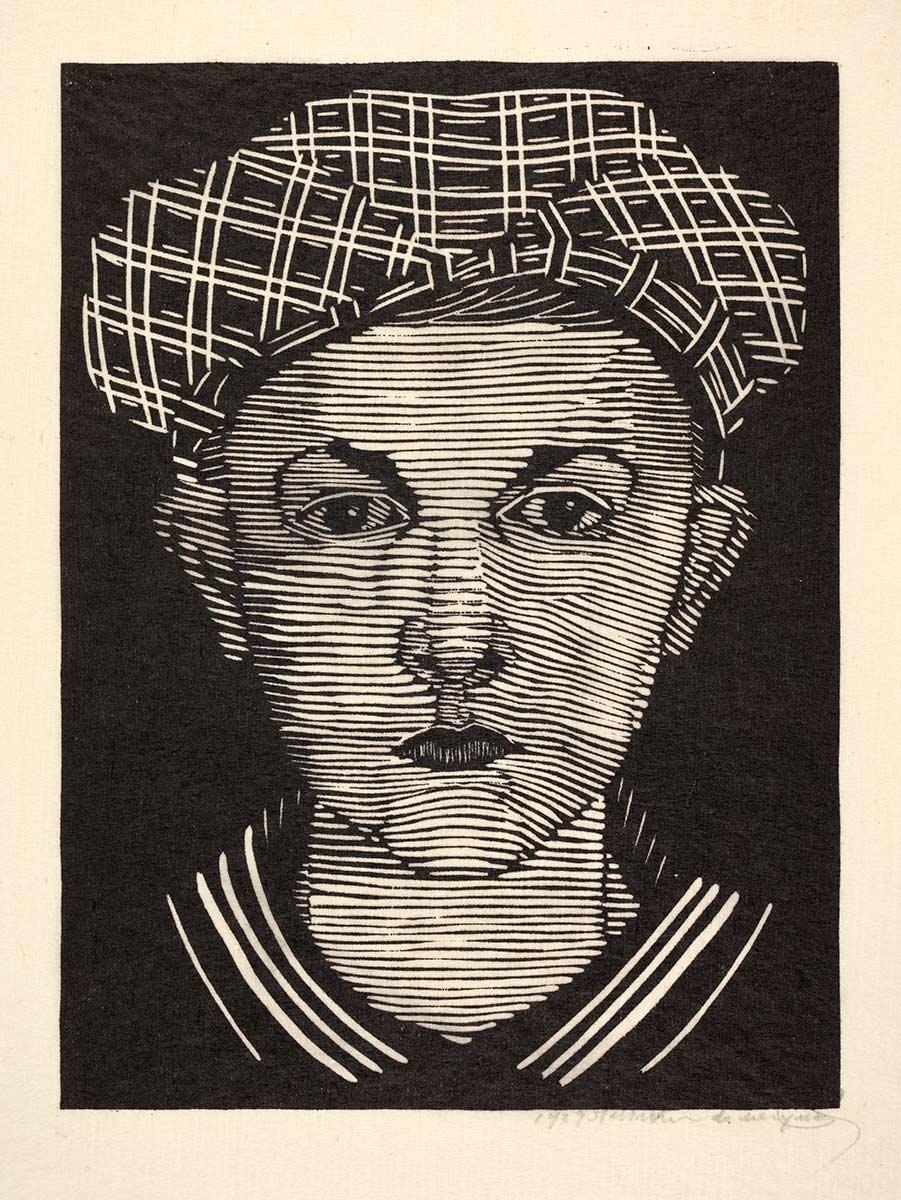
Unlike Escher, De Mesquita was neither a traveller nor a bohemian, like many artists active around the fin de siècle. He was born in Amsterdam and when Dutch artists moved in large numbers to Paris in the late 19th and early 20th centuries or in later years to New York, De Mesquita stayed at home. Throughout his career he worked from his home at 24 Linnaeuskade in Watergraafsmeer in Amsterdam.
A quirky loner
But there are also similarities between the two. Like Escher, De Mesquita briefly studied architecture. Only later did he make the definitive switch to the arts. Both artists were fond of nature. For De Mesquita, this mainly resulted in many prints of plants and flowers, Escher mainly depicted landscapes. De Mesquita's ‘sensitivist’ drawings were as enigmatic as the prints that would make his pupil famous. Both De Mesquita and Escher left it to the viewer to discern the meanings contained in their works. Both also produced many self-portraits. A subject that was always available to an artist on his own. Both found little connection with colleagues in their time and are often not mentioned in art history books. They are loners who did not fit in well in the hierarchy of the Dutch art world and cannot be classified under a specific movement. In the catalogue accompanying De Mesquita's first posthumous exhibition, which was organised in the Stedelijk Museum Amsterdam on the initiative of M.C. Escher in 1946, Escher described his teacher as a quirky loner:
"He was only slightly influenced by others, but himself exerted a strong influence on the work of many young people and especially on that of his pupils."
A final similarity is that both were also active as applied artists. In the case of Escher, this led to wrapping paper, stamps, designs for panels, murals and tile tableaux and patterns for fabrics. De Mesquita also created fabric designs for which he made the patterns using the batik technique and using wood stamps.
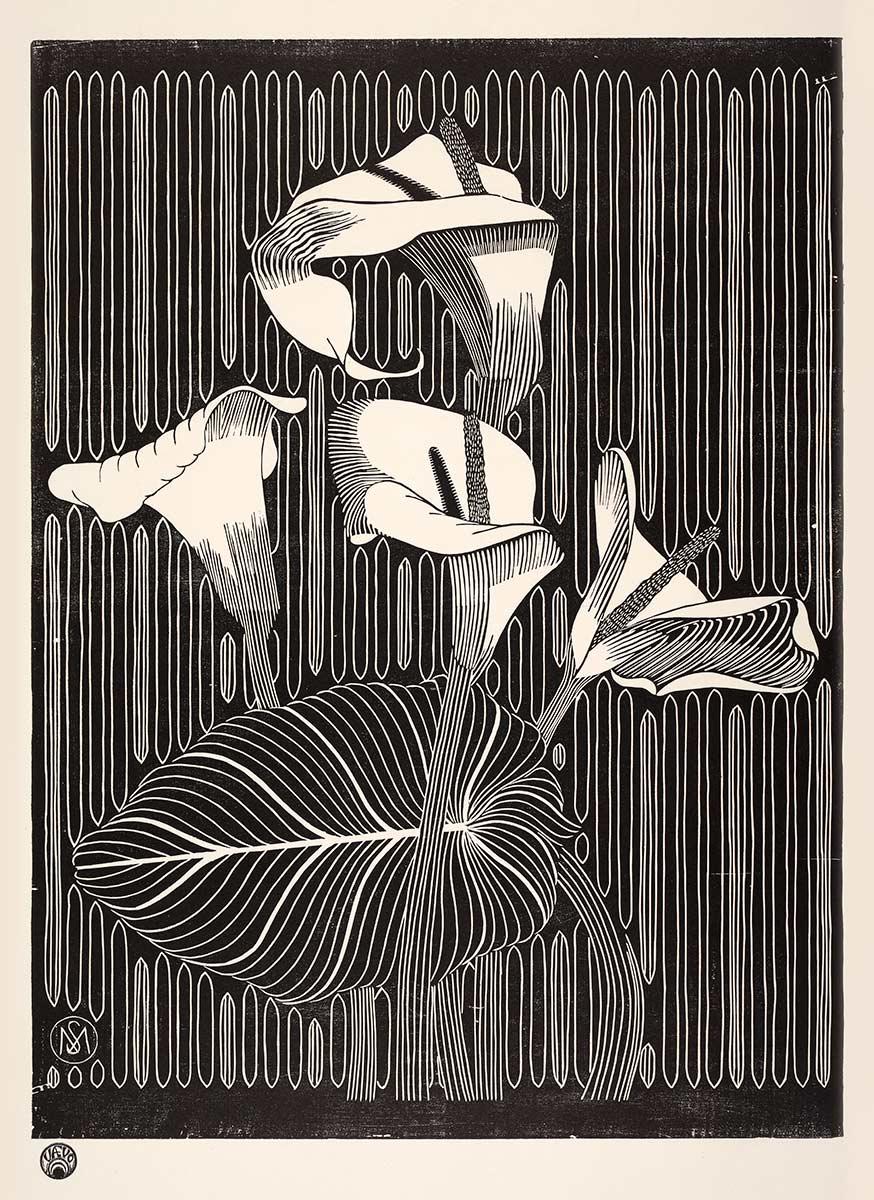
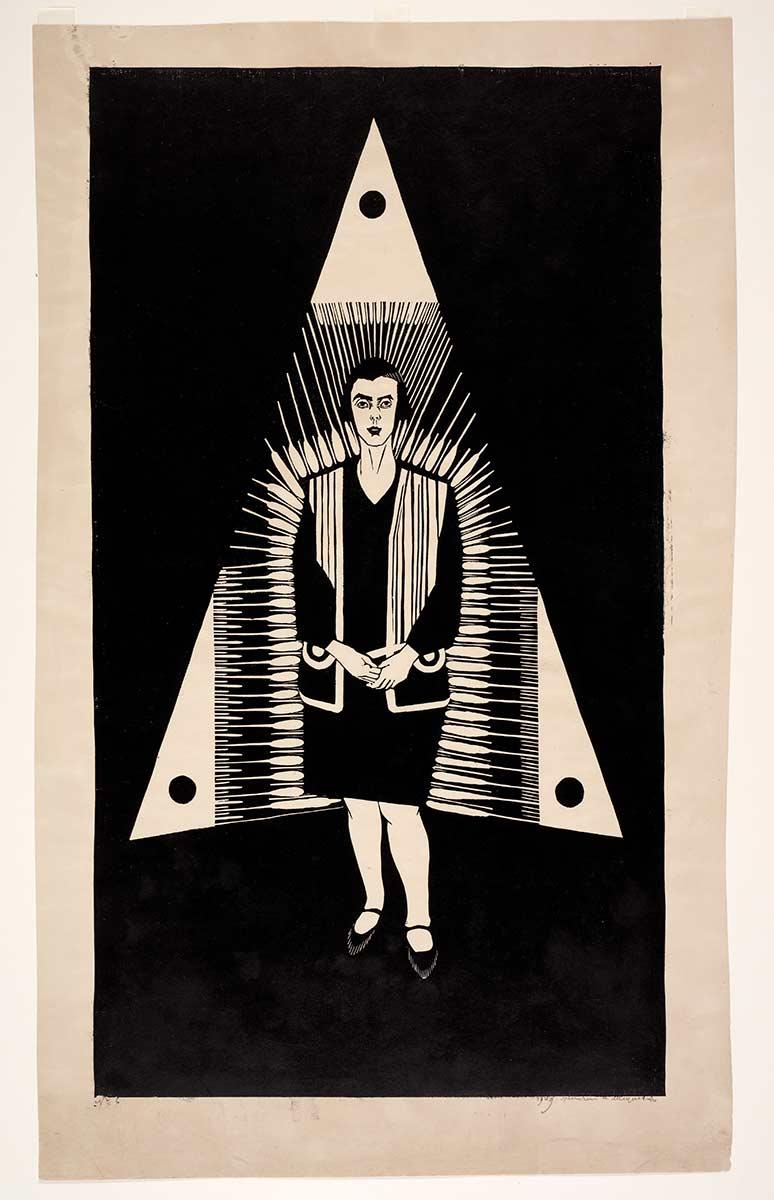
Samuel Jessurun de Mesquita was born in Amsterdam on 6 June 1868 as the youngest son of Josua Jessurun de Mesquita and Judith Mendes da Costa. His parents were Sephardic Jews, originally from Portugal and Spain. Sister Anna and brother Joseph came before him. Father Joshua taught German and Hebrew at the ‘Stedelijk Gymnasium’ (grammar school). He inherited his drawing talent, which was identified at an early age, from his mother's side. The Mendes da Costa lineage produced several artists, including sculptor Joseph Mendes da Costa. He was both a first cousin and a lifelong friend of Samuel. At the age of fourteen, Samuel took the entrance exam for the Rijksakademie, but despite his drawing talent he was rejected. After being apprenticed to an architect from the age of fourteen to sixteen, he studied architecture. Because the course was discontinued after two years, he switched to the ‘Rijksnormaalschool voor Tekenonderwijzers’ (school for drawing teachers), earning his certificate in 1889. As a starting artist he experimented with all kinds of techniques in the years that followed. From painting and drawing to woodcuts, etchings, ex libris, wood stamps and batik. Probably because he was looking for more financial security, De Mesquita chose a second career as a teacher. He was appointed teacher at the School of Architecture and Decorative Arts in Haarlem in 1902, remaining there until 1926. In 1904 he married Betsie Pinédo (1874-1944). The couple settled on the Linnaeuskade in the Amsterdam neighborhood of Watergraafsmeer, where their son Jaap was born in 1905. In 1918 he was appointed associate professor of graphic arts, working two days a week, which left him enough room for his art. After the closure of the school in 1926, he worked as a full-time artist for a time. In 1933 he became a teacher in graphic arts again, now at the Rijksakademie in Amsterdam. By then he was already 65. At the end of 1936 he stopped teaching permanently and after that became increasingly isolated. He exhibited for the last time in April 1940. After the German invasion he only had contact with a few loyal friends, including M.C. Escher.
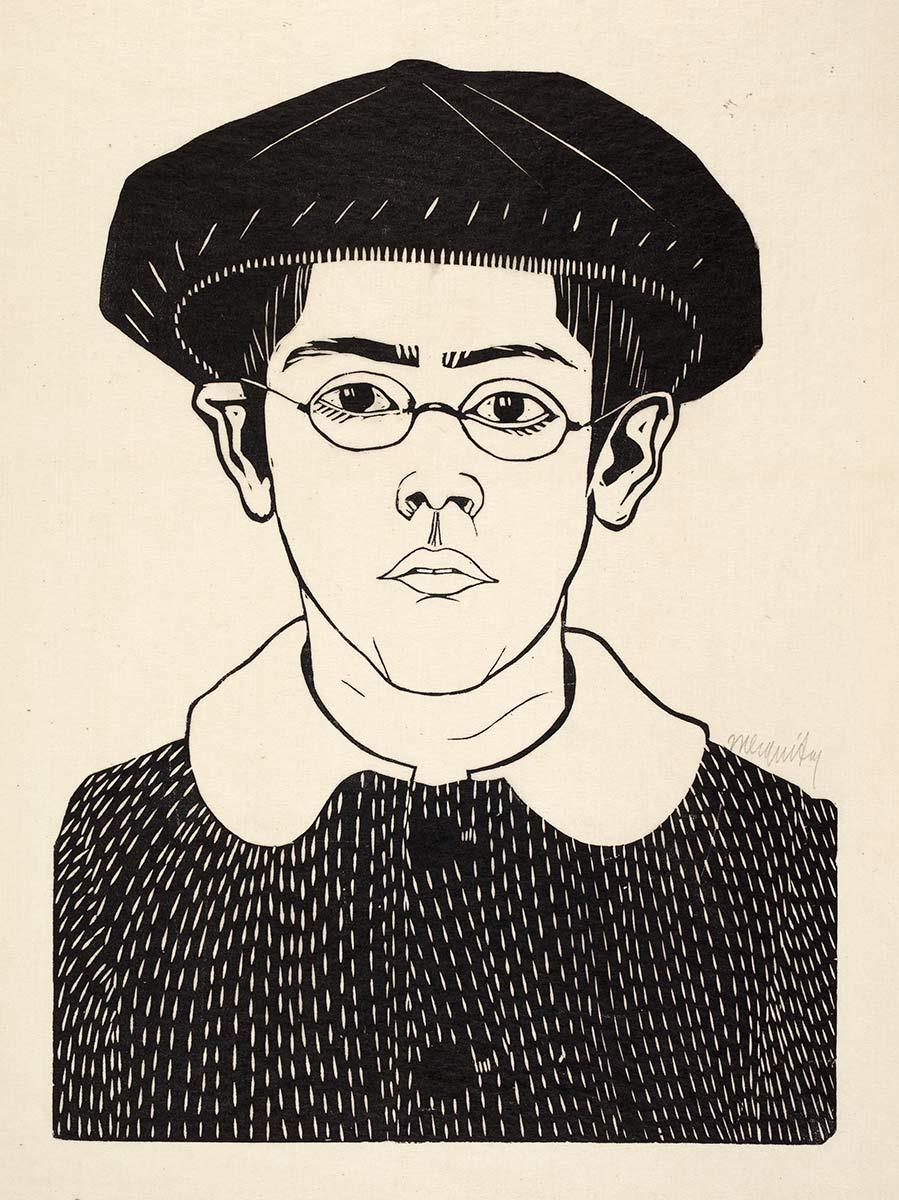
The print of a boot
Although his friends urged him to go into hiding, De Mesquita did not. He and his wife believed that their lineage from the Sephardic branch of Judaism would protect them and keep them from being deported. However, on 31 January 1944 the family was arrested by the Nazis. In an April 1968 interview with Bibeb in Vrij Nederland, M.C. Escher describes how he went to the Linnaeuskade on 28 February 1944 and found the house of the De Mesquita family empty. On the ground he found an etching by De Mesquita showing a print of a German boot. Escher retrieved 136 copies of 69 different prints. The next day he returned to salvage more work, but he was too late: a moving van was at the door and the house was cleared under the supervision of the Germans (* and **). Samuel and Betsie died shortly afterwards in Auschwitz. The exact date is not known. Son Jaap died in Theresienstadt on 30 March 1944.
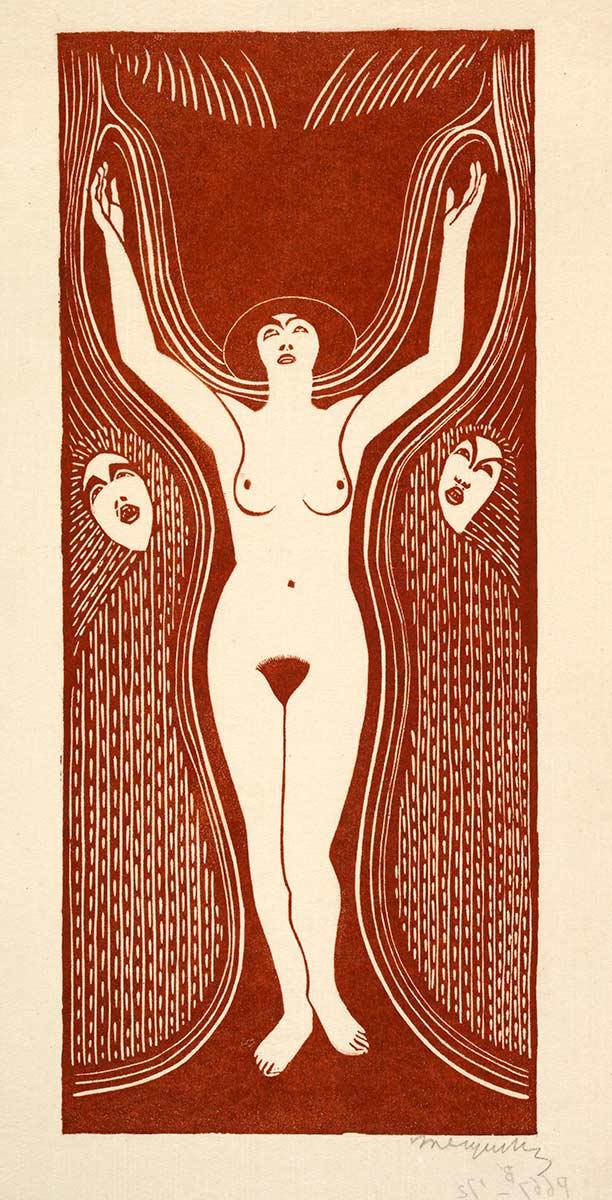
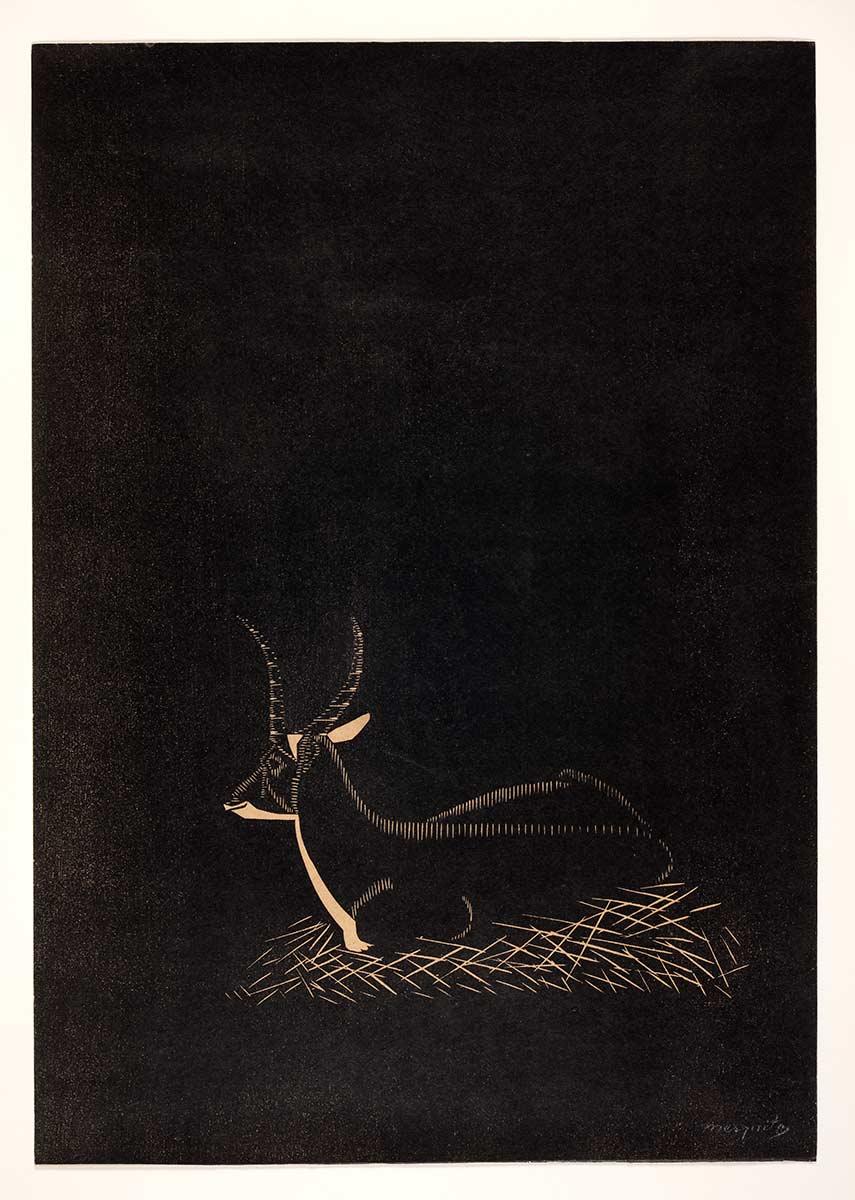
In July 1945 Escher made an inventory of the prints he had brought with him. This list formed the basis of the exhibition to be held in the Stedelijk Museum in Amsterdam in 1946. The etching featuring the print of the boot hung on the door of the cupboard with drawing tools in his studio until Escher's death.
Samuel Jessurun De Mesquita was first and foremost a graphic artist. Throughout his career he managed to capture attention with his prints. Initially to a modest extent, but from about 1915 he took on an increasingly important position within Dutch graphic art. His teaching positions in this field certainly helped.
An experimental graphic artist
He usually found his subjects close by: in his own home or studio or he went to Artis (zoo) to portray an animal. In the prints that emerged from this, he managed to combine a perfect command of technique with a great urge to experiment. He was a craftsman, but by no means should this be taken to imply that he was not always looking to push back the boundaries of what is possible within his craft. Graphic art lends itself well to this: a relief print can be made with wood, but also with any other material that can be processed and onto which ink can be applied. The same goes for intaglio: any material in which an image can be carved can be suitable. For example, De Mesquita used marble and zinc to make impressions. In addition, he processed many of his prints afterwards with other materials, which resulted in unique works of art. Escher himself wrote the foreword in the catalogue for the solo exhibition of De Mesquita held in 1946. In this, he examines his teacher’s urge to experiment:
"He was averse to all routine and liked to investigate for himself the value and the validity of a process that had been used for a long time in a certain way and with materials proven by experience and practice. Why does an etching necessarily have to be made on a metal plate? Couldn't another material give surprising results? In exceptional cases he also made dry-point etchings on celluloid, even on a glass plate of which he made a photographic impression. What is the effect of an intaglio printing block that is used as a relief printing block? See the etching that he printed as a woodcut."***
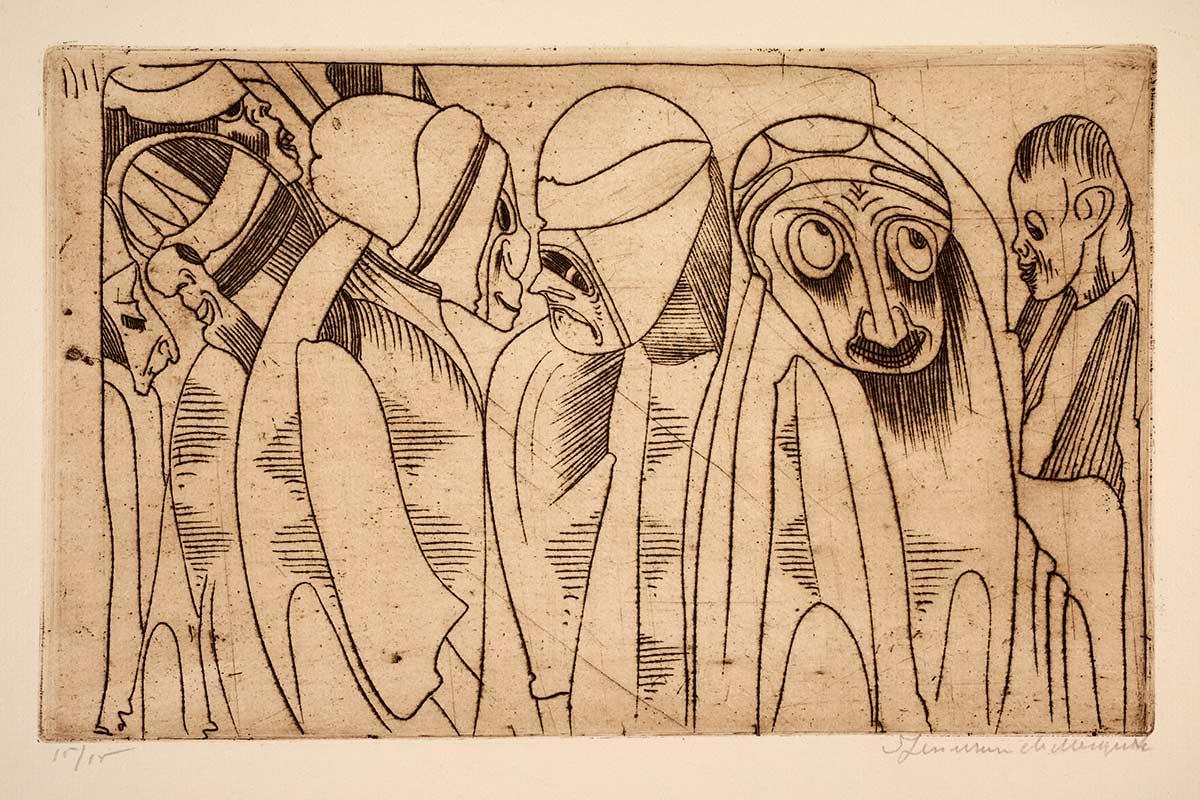
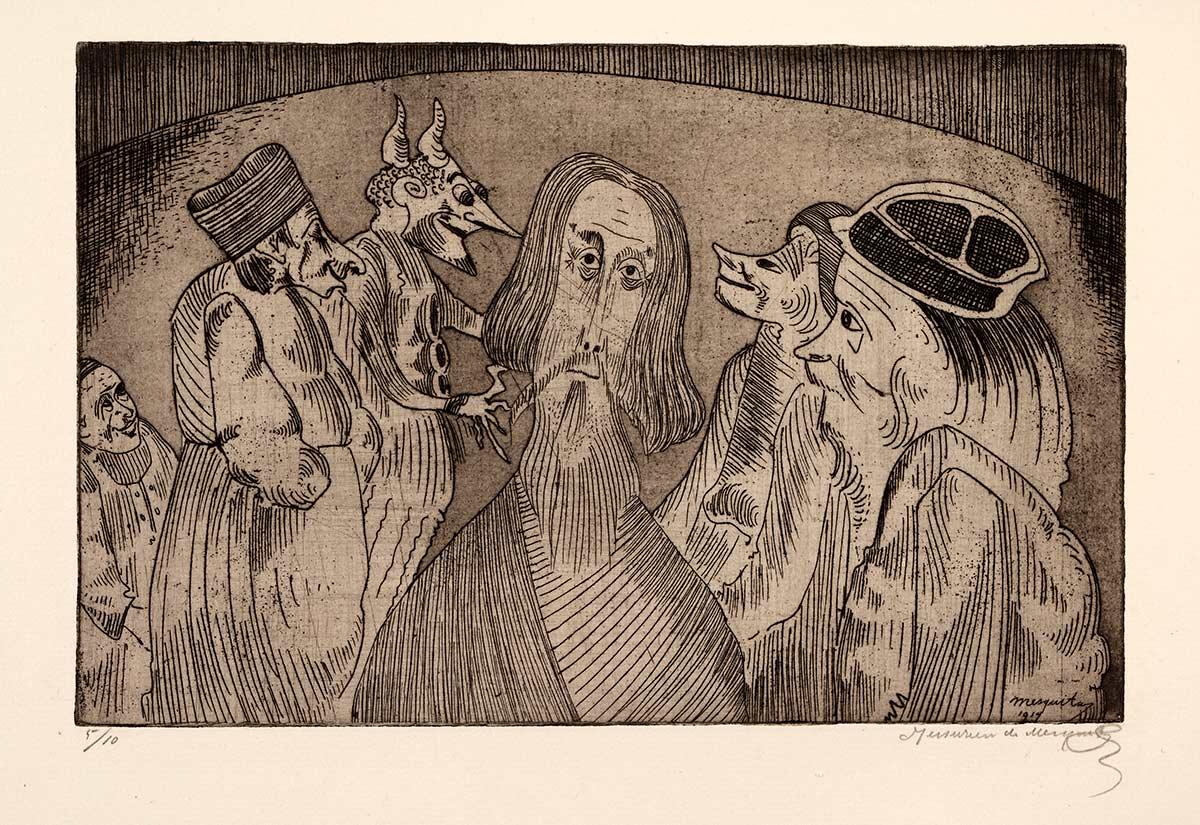
A two-sided body of work
Mesquita's oeuvre can roughly be divided into two halves. On the one hand there are self-portraits, other portraits of people, images of flowers, plants and animals and a single landscape. Depictions of reality, then. On the other there are his sensitivist images, imaginative works which were often humorous, though sometimes also threatening in nature.
Among his depictions of reality, his prints of flora and fauna are particularly striking. The more experienced he became as an artist, the more he started to simplify his graphic art. From around 1910, De Mesquita adopted an ‘austere’ way of depicting his subjects, stripping out anything that was not essential and portraying them in bold lines. The result is a kind of archetype, an objective image in which the creator appears to be absent. These are works for which he initially struggled to gain appreciation at a time when it the metaphorical charge of Symbolism and the opulence of Art Nouveau were in vogue. But with the disappearance of those movements and the rise of art deco and the New Objectivity, appreciation for De Mesquita's ‘austere’ graphic art also increased.
His sensitivist drawings were popular from an early age, partly because they were in line with the prevailing tendencies in art. He started these early in his career and he continued with them well into the war, when he had already retired from graphic art. They offered him an opportunity to escape the threatening reality around him.
Selective revaluation
After the exhibition in 1946, there was a long period of silence around De Mesquita. When a revaluation took place more than thirty years later, it initially happened for the wrong reasons. In 1978 he was included in an exhibition catalogue on Symbolism, a movement that caused a furore in the Netherlands at the end of the 19th century. The woodcut Ecstasy (1922) was chosen for this, an image that fits this movement well, but which was suddenly seen as being characteristic of De Mesquita's work. This implied that he belonged to a movement that had already reached its peak around the turn of the century. However, such symbolically charged images are not representative of De Mesquita's oeuvre. This selective view of his work resurfaced in the mid 1980s, when two retrospective exhibitions about him were held, albeit with the emphasis being mainly on his sensitivistic representations. It was not until the publication of Jonieke van Es's monograph and the retrospective exhibition in the Gemeentemuseum Den Haag (now: Kunstmuseum Den Haag), both in 2005, that De Mesquita was really put in the spotlight again for the first time.
De Mesquita was a unique artist who simultaneously created images derived from reality as well as scenes drawn from the imagination. He knew how to unite reality and illusion, simplicity and complexity, order and chaos, fact and fiction, rationality and emotion and the conscious and the unconscious.


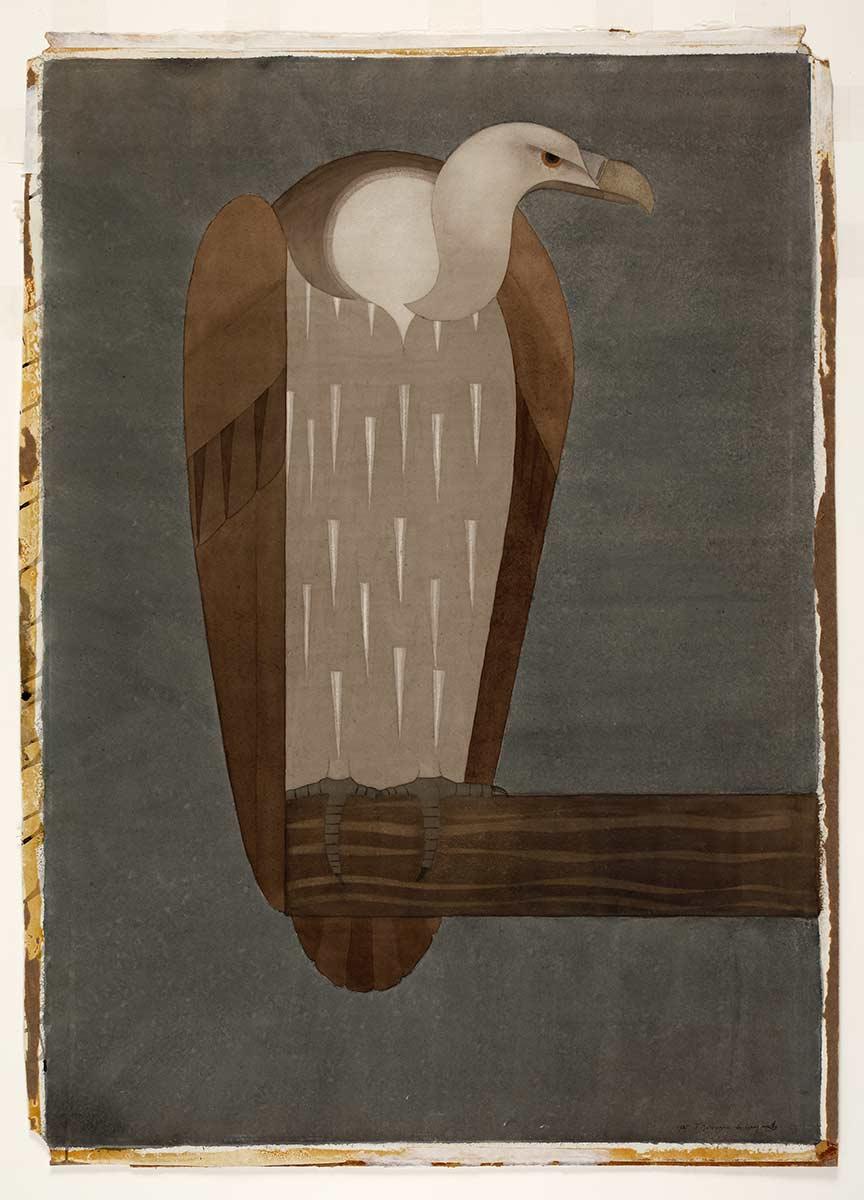
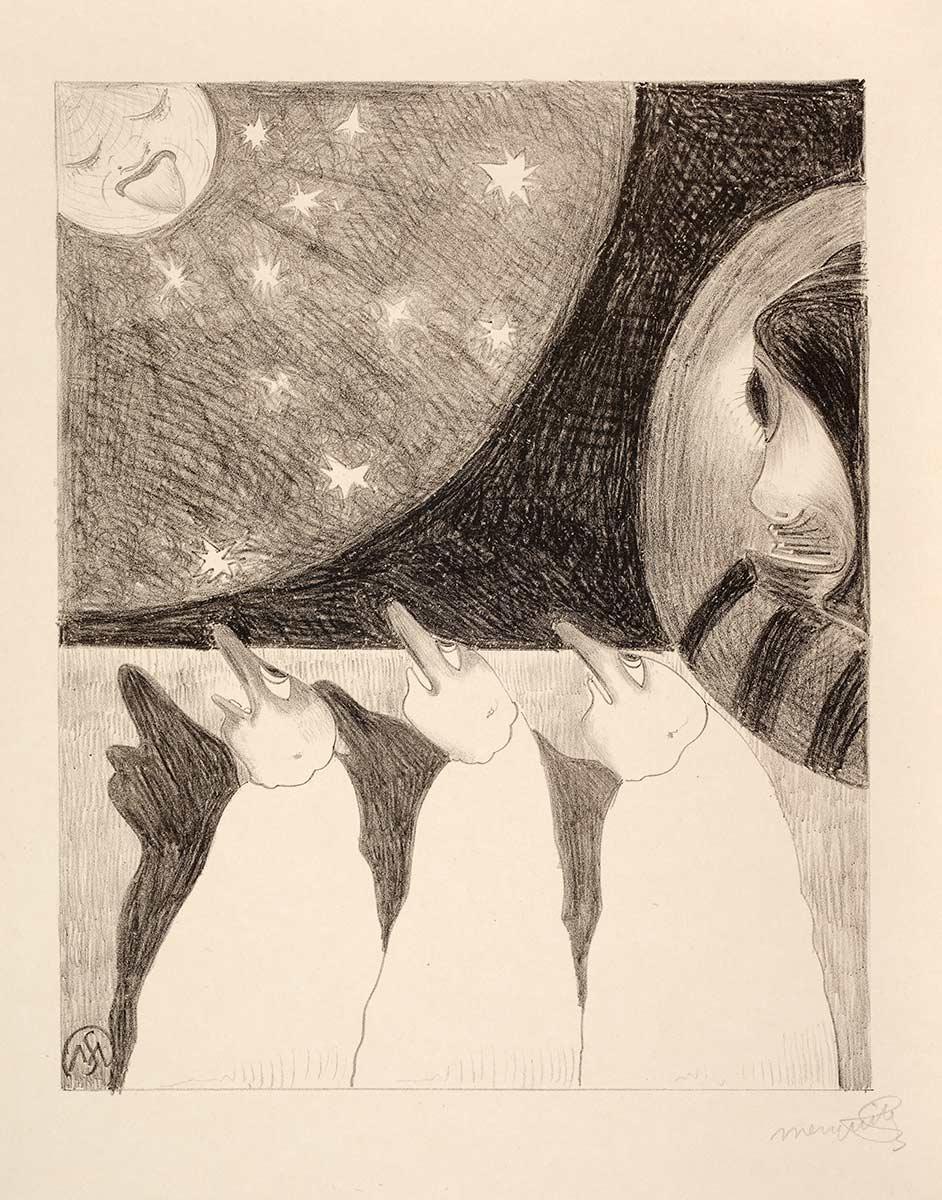
Sources
* Letter from Escher to J.M. Prange, 20 August 1945
** Willem Keizer, Eschers Redding (Escher's Salvage), 2015, 'Schoon & haaks' in De Parelduiker 21 (2016), no. 1, page 64-66
*** M.C. Escher, His Life and Complete Graphic Work, edited by J.L. Locher, Abradale Press, 1982, page 59
This article is partly based on the dissertation by Jonieke van Es: Samuel Jessurun de Mesquita: leerstelligheid versus werken in trance.
More Escher today

